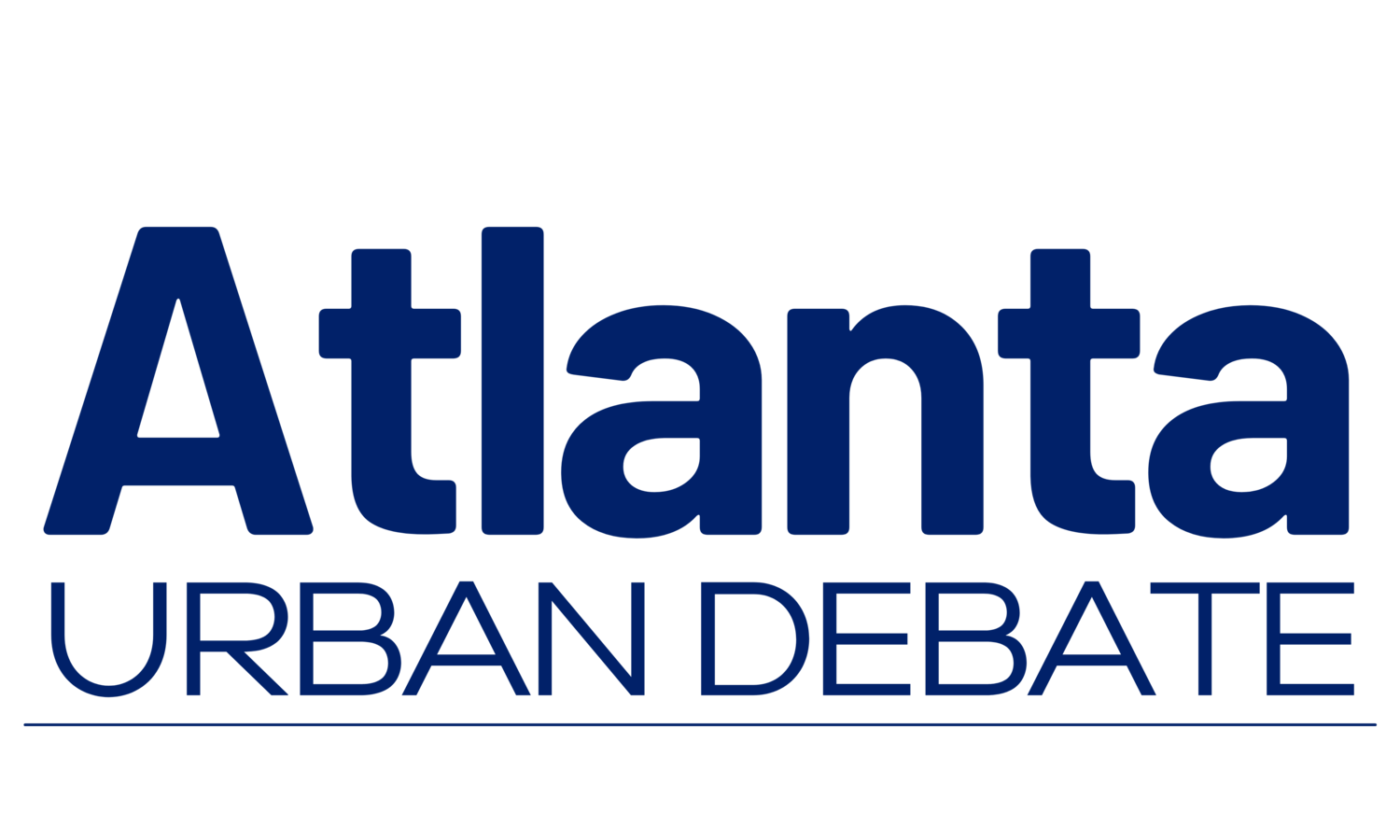The Atlanta Urban Debate League is committed to providing excellent debate education programs, services, and opportunities to diverse students, educators, and members of the community!
Introducing Policy Debate
Being Affirmative
Introduction
When debaters are on the affirmative side, they must present a specific policy proposal under that year’s resolution. A resolution will be a broad proposal needing specific examples of implementation. This takes the form of a plan, which proposes that a specific actor should take specific action(s).
A complete affirmative case will identify a problem within the resolution that needs to be fixed (inherency), present a plan on how to fix that problem (plan), provide proof that the plan will address that problem (solvency), and the benefits that will be gained from doing the plan, also articulated as the consequences avoided or addressed by doing the plan (harms/advantage). You can use the acronym HIPS or SHIP to help remember.
Under the following resolution, an affirmative case could look like this:
Resolution: Waffle House should change its menu.
Affirmative Case
Plan: Waffle House should stop selling waffles.
Inherency: Waffle House is currently selling waffles.
Harms: Waffles are unhealthy and lead to worse overall health in the long-term.
Solvency: Not selling waffles would boost the health of Waffle House customers.
Learning Objectives
In this section, students should:
Learn to identify each part of an affirmative.
Understand that they need to read every part in every affirmative debate round.
Demonstrate their knowledge through the ability to write a hypothetical affirmative if given a resolution.
Points of Improvement
Here are some things to look out for as you teach your students about the affirmative side:
Debaters can easily read each part of an affirmative in their 1AC without understanding why they’re doing it. After introducing the key terms with Lesson Plan #1 ((Wo)man with a Plan!), gauge their understanding of them with Lesson Plan #2 (What Should We Do?).
If they don’t understand plans, they may forget to read one, explaining how to solve their harms without actually telling the judge to enact the solution they are advocating.
If they don’t understand inherency, they may propose an affirmative that doesn’t change anything that’s happening right now or is redundant with current, real-world action.
If they don’t understand solvency, they may focus on their harms/advantage while failing to prove that their plan does anything to address them. Alternatively, they may forget that their plan is what’s doing the solving, and there may be a disconnect between the proposed action and the solution to their harms.
If they don’t understand harms/advantages, they may propose a perfectly logical policy but won’t present any consequences for failing to enact it.
Signs of Progress
Here are some positive signs that students are beginning to understand the affirmative side.
Students can identify each part of an affirmative using the correct term.
Students can write their own mock affirmatives that feature all of the necessary parts.
In practice debate rounds, students read and extend each part of the affirmative as necessary.
